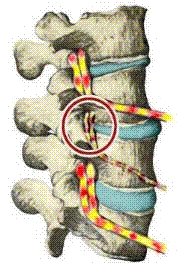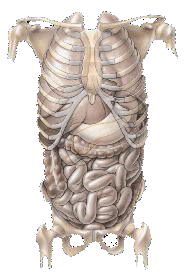Subluxation Explained
What is a Subluxation?
What is a Subluxation and what does it do to me?
First, the simple explanation.

In simplest terms, a subluxation (a.k.a. Vertebral Subluxation) is when one or more of the bones of your spine (vertebrae) move out of position and create pressure on, or irritate spinal nerves. Spinal nerves are the nerves that come out from between each of the bones in your spine. This pressure or irritation on the nerves then causes those nerves to malfunction and interfere with the signals traveling over those nerves.

How does this affect you?
Your nervous system controls and coordinates all the functions of your body. If you interfere with the signals traveling over nerves, parts of your body will not get the proper nerve messages and will not be able to function at 100% of their innate abilities. In other words, some part of your body will not be working properly.
It is the responsibility of the Doctor of Chiropractic to locate subluxations, and reduce or correct them. This is done through a series of chiropractic adjustments specifically designed to correct the vertebral subluxations in your spine. Chiropractors are the only professionals who undergo years of training to be the experts at correcting subluxations.
Now, the detailed explanation.

Subluxations are really a combination of changes going on at the same time. These changes occur both in your spine and throughout your body. For this reason chiropractors often refer to vertebral subluxations as the "Vertebral Subluxation Complex", or "VSC" for short.
In the VSC, various things are happening inside your body simultaneously. These various changes, known as "components," are all part of the vertebral subluxation complex. Chiropractors commonly recognize five categories of components present in the VSC. These five are:

1. Kinesiopathology – This can be described as JOINT DAMAGE. This condition affects the normal position of vertebral alignment and asymmetry, resulting in irregular motion. Spinal pathomechanics, including alignment and motion irregularities creates mechanical stress and joint decay. One or more vertebra loose there proper position that affects the proper movement of the joint, this is called aberrant motion.
2. Histopathology – This can be described as TISSUE DAMAGE. Inflammation, edema and swelling of tissue, usually local to the traumatized area. Pathological changes which occur to the spinal soft tissues and joints, fibrosis and adhesions of spinal tendons and ligaments, as well as dehydration and degeneration of spinal discs. The ligaments and tendons start to loose there elastic and plastic properties.
3. Neuropathology – This can be described as NERVE DAMAGE. Nerves basically do two things, they get excited / hypersensitivity or depressed / hyposensitivity, compressed or facilitated nerve tissue. Irritation or injury to spinal nerve roots through compression, stretch or chemical irritation from improperly positioned spinal structures. Improper spinal function can choke or irritate delicate nerve tissue. The resulting nerve system dysfunction can cause symptoms elsewhere in the body. Research has shown that only a small amount of pressure on spinal nerves can have a profound impact on the function of the nerves.

4. Myopathology – This can be described as MUSCLE DAMAGE. Pathological changes occurring in the spinal muscles result in hyper tonicity, fibrosis, muscle weakness, arrested development of the tissues and long term malfunctioning of the spine. Inflammation, edema and swelling of tissue are usually local to the traumatized area. It is important to understand that many times the dysfunction existed before the pain presents.
5. Pathophysiology – This can be described as overall HEALTH DAMAGE. The pathoanatomical trauma due to the previous four components results in deteriorating spinal function or abnormal biomechanical functional. This is usually seen locally as degeneration or erosion locally and peripherally as a loss of global homeostasis. There is a systemic breakdown of the body, this is the final stage and the underlying cause of disease.
Chiropractors have known about the dangers of subluxations for over one hundred years. Today, more scientific evidence is showing the dangers of subluxations and the health benefits of correcting them. To be truly healthy, it is vital that your nervous system be functioning free of interference from subluxations. Our goal is to allow your body to return itself to the highest level of health possible by correcting VSC. Chiropractors are the ONLY health professionals trained in the detection, location, and correction of the VSC.

השאר תגובה